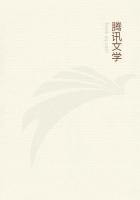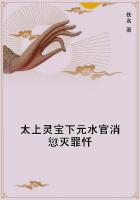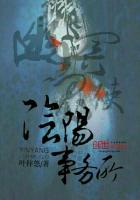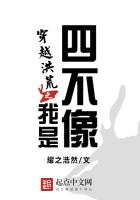1So much for the generative processes in snakes and insects, and also in oviparous quadrupeds. Birds without exception lay eggs, but the pairing season and the times of parturition are not alike for all.
Some birds couple and lay at almost any time in the year, as for instance the barn-door hen and the pigeon: the former of these coupling and laying during the entire year, with the exception of the month before and the month after the winter solstice. Some hens, even in the high breeds, lay a large quantity of eggs before brooding, amounting to as many as sixty; and, by the way, the higher breeds are less prolific than the inferior ones. The Adrian hens are small-sized, but they lay every day; they are cross-tempered, and often kill their chickens; they are of all colours. Some domesticated hens lay twice a day; indeed, instances have been known where hens, after exhibiting extreme fecundity, have died suddenly.
Hens, then, lay eggs, as has been stated, at all times indiscriminately; the pigeon, the ring-dove, the turtle-dove, and the stock-dove lay twice a year, and the pigeon actually lays ten times a year. The great majority of birds lay during the spring-time. Some birds are prolific, and prolific in either of two ways-either by laying often, as the pigeon, or by laying many eggs at a sitting, as the barn-door hen. All birds of prey, or birds with crooked talons, are unprolific, except the kestrel: this bird is the most prolific of birds of prey; as many as four eggs have been observed in the nest, and occasionally it lays even more.
Birds in general lay their eggs in nests, but such as are disqualified for flight, as the partridge and the quail, do not lay them in nests but on the ground, and cover them over with loose material. The same is the case with the lark and the tetrix. These birds hatch in sheltered places; but the bird called merops in Boeotia, alone of all birds, burrows into holes in the ground and hatches there.
Thrushes, like swallows, build nests of clay, on high trees, and build them in rows all close together, so that from their continuity the structure resembles a necklace of nests. Of all birds that hatch for themselves the hoopoe is the only one that builds no nest whatever; it gets into the hollow of the trunk of a tree, and lays its eggs there without ****** any sort of nest. The circus builds either under a dwelling-roof or on cliffs. The tetrix, called ourax in Athens, builds neither on the ground nor on trees, but on low-lying shrubs.
2The egg in the case of all birds alike is hard-shelled, if it be the produce of copulation and be laid by a healthy hen-for some hens lay soft eggs. The interior of the egg is of two colours, and the white part is outside and the yellow part within.
The eggs of birds that frequent rivers and marshes differ from those of birds that live on dry land; that is to say, the eggs of waterbirds have comparatively more of the yellow or yolk and less of the white. Eggs vary in colour according to their kind. Some eggs are white, as those of the pigeon and of the partridge; others are yellowish, as the eggs of marsh birds; in some cases the eggs are mottled, as the eggs of the guinea-fowl and the pheasant; while the eggs of the kestrel are red, like vermilion.
Eggs are not symmetrically shaped at both ends: in other words, one end is comparatively sharp, and the other end is comparatively blunt; and it is the latter end that protrudes first at the time of laying. Long and pointed eggs are female; those that are round, or more rounded at the narrow end, are male. Eggs are hatched by the incubation of the mother-bird. In some cases, as in Egypt, they are hatched spontaneously in the ground, by being buried in dung heaps. A story is told of a toper in Syracuse, how he used to put eggs into the ground under his rush-mat and to keep on drinking until he hatched them. Instances have occurred of eggs being deposited in warm vessels and getting hatched spontaneously.
The sperm of birds, as of animals in general, is white. After the female has submitted to the male, she draws up the sperm to underneath her midriff. At first it is little in size and white in colour; by and by it is red, the colour of blood; as it grows, it becomes pale and yellow all over. When at length it is getting ripe for hatching, it is subject to differentiation of substance, and the yolk gathers together within and the white settles round it on the outside. When the full time is come, the egg detaches itself and protrudes, changing from soft to hard with such temporal exactitude that, whereas it is not hard during the process of protrusion, it hardens immediately after the process is completed: that is if there be no concomitant pathological circumstances. Cases have occurred where substances resembling the egg at a critical point of its growth-that is, when it is yellow all over, as the yolk is subsequently-have been found in the cock when cut open, underneath his midriff, just where the hen has her eggs; and these are entirely yellow in appearance and of the same size as ordinary eggs. Such phenomena are regarded as unnatural and portentous.
Such as affirm that wind-eggs are the residua of eggs previously begotten from copulation are mistaken in this assertion, for we have cases well authenticated where chickens of the common hen and goose have laid wind-eggs without ever having been subjected to copulation. Wind-eggs are smaller, less palatable, and more liquid than true eggs, and are produced in greater numbers. When they are put under the mother bird, the liquid contents never coagulate, but both the yellow and the white remain as they were. Wind-eggs are laid by a number of birds: as for instance by the common hen, the hen partridge, the hen pigeon, the peahen, the goose, and the vulpanser.

